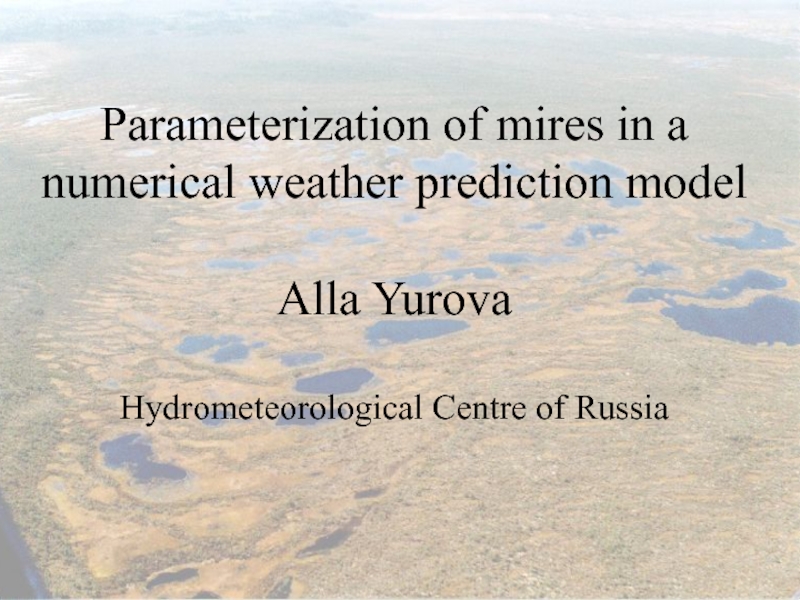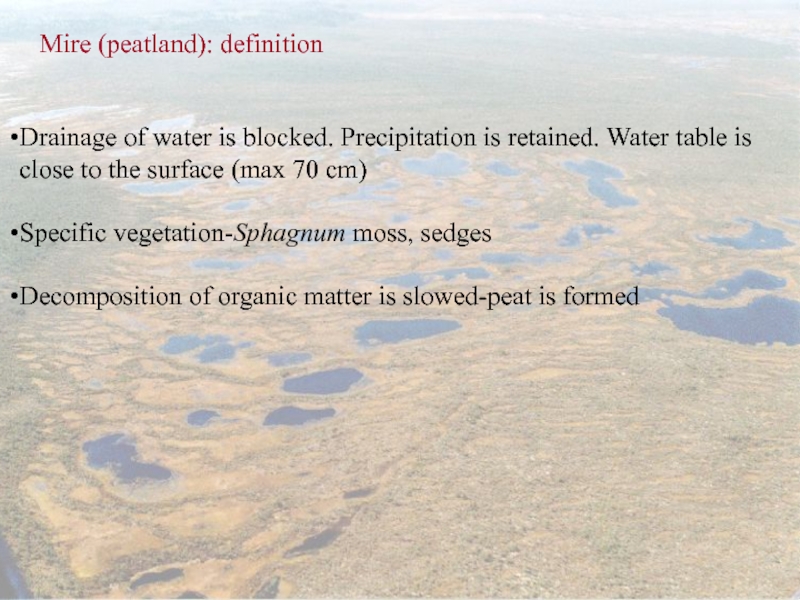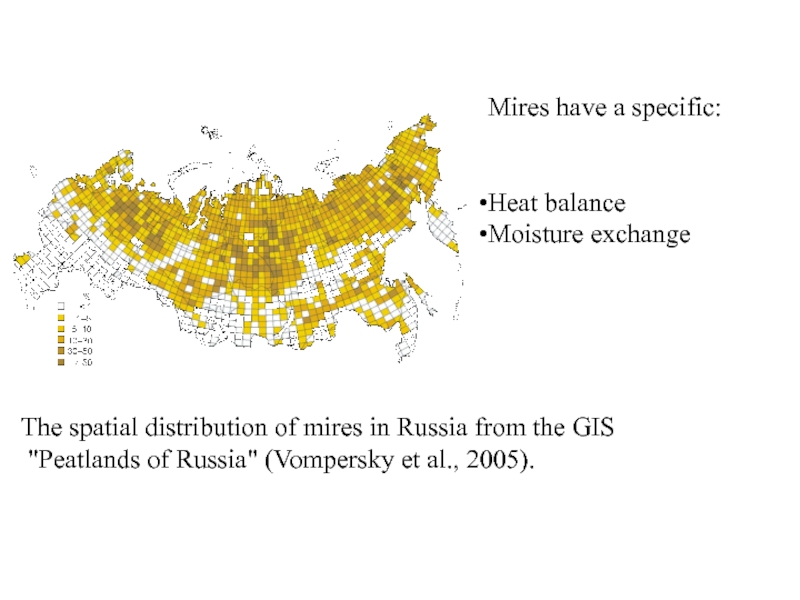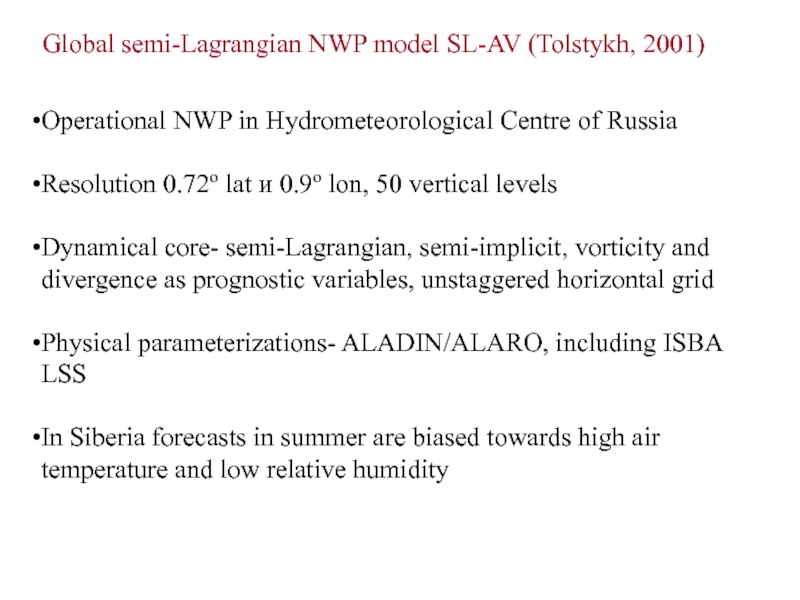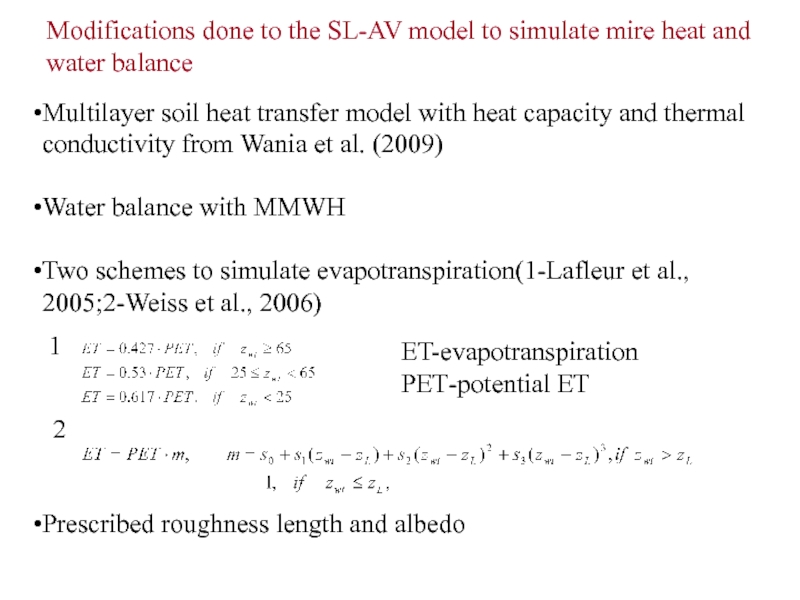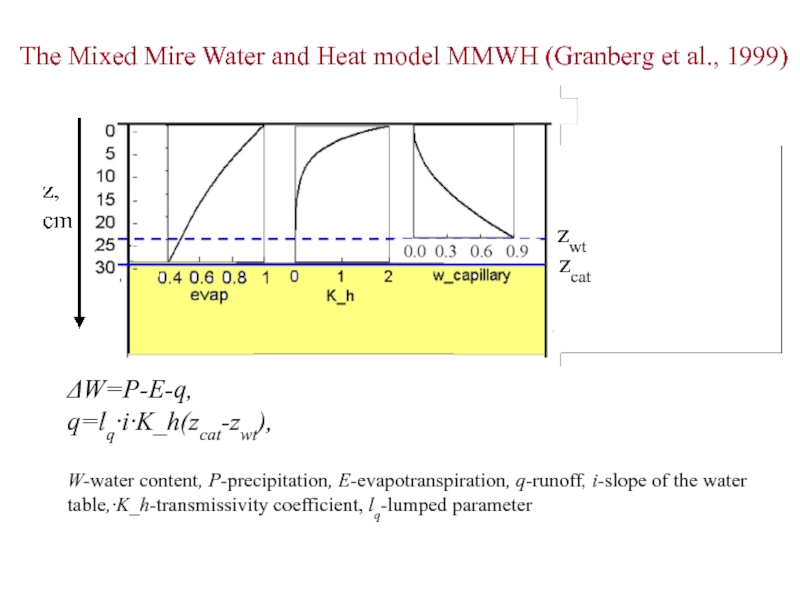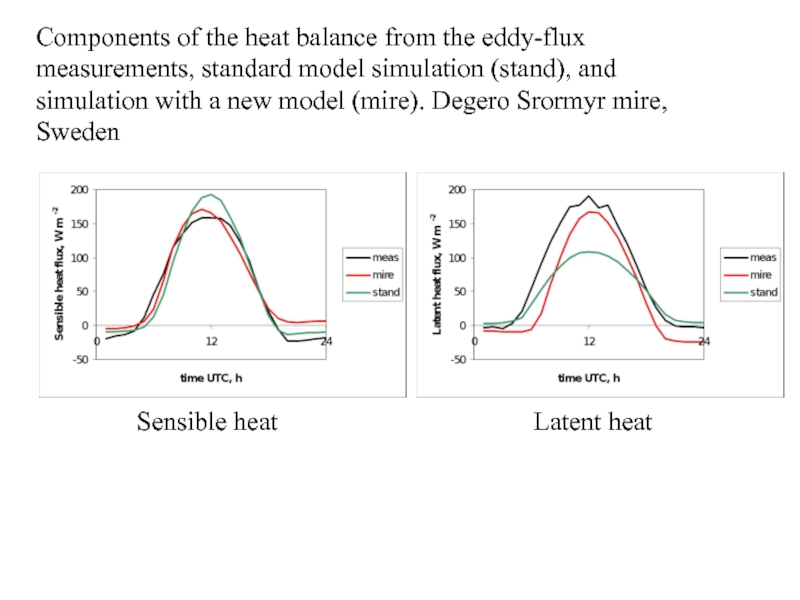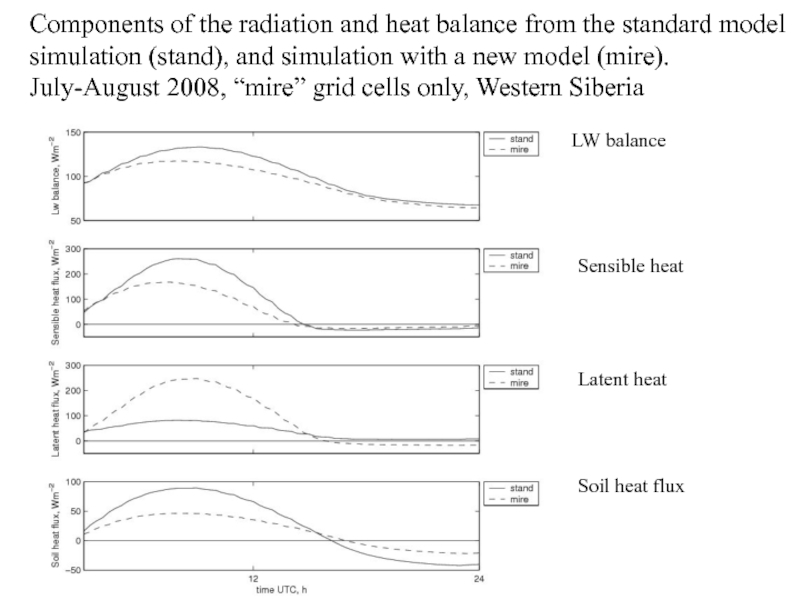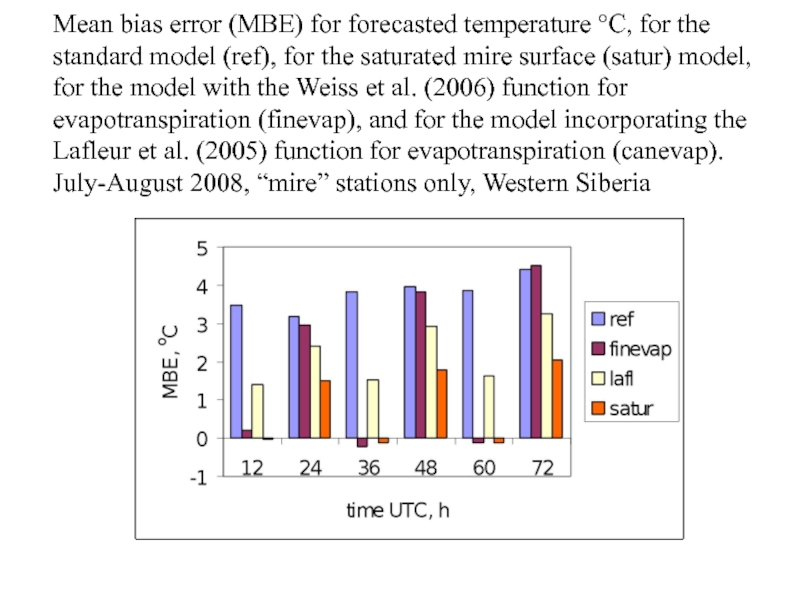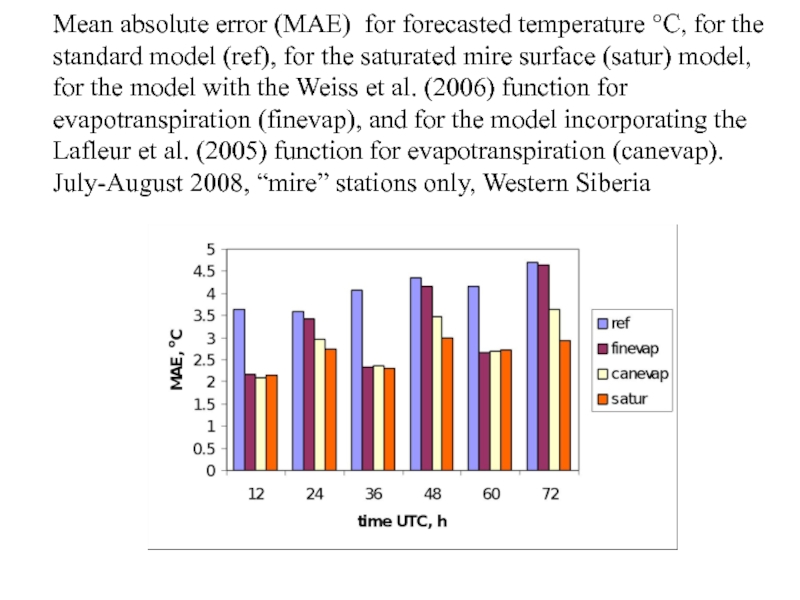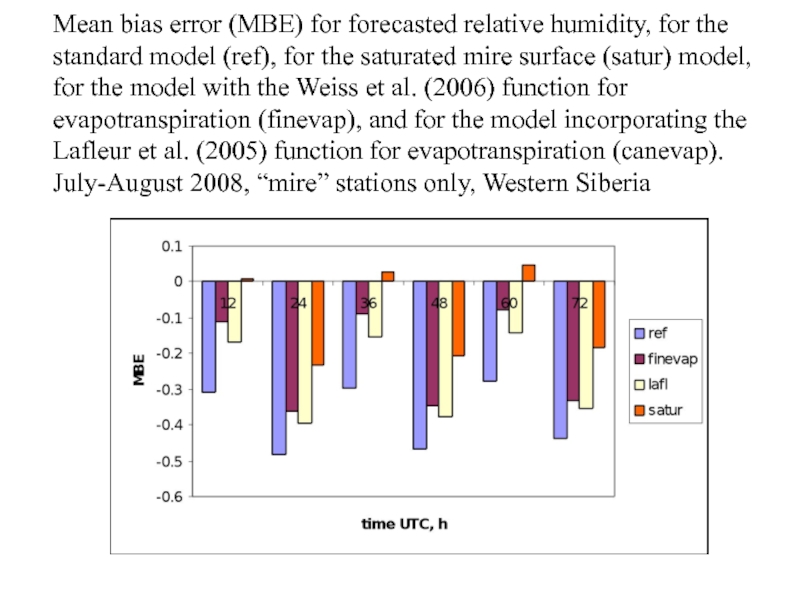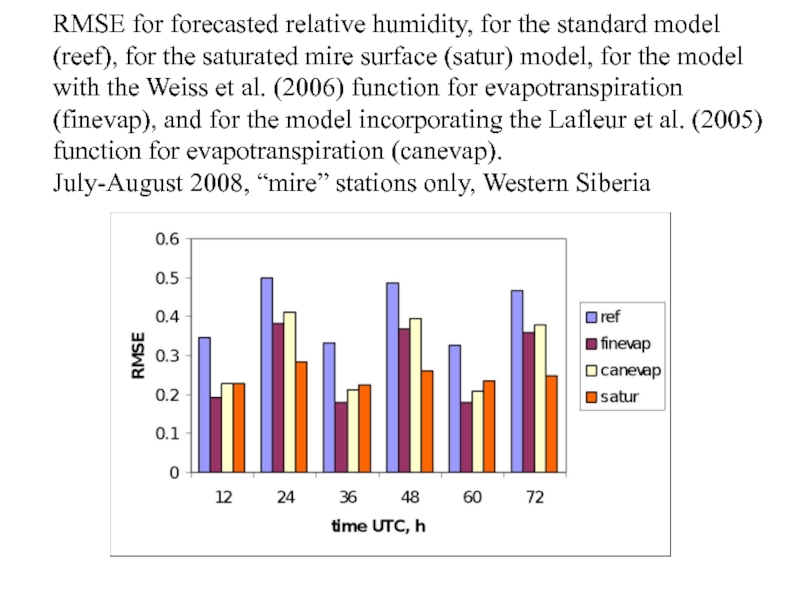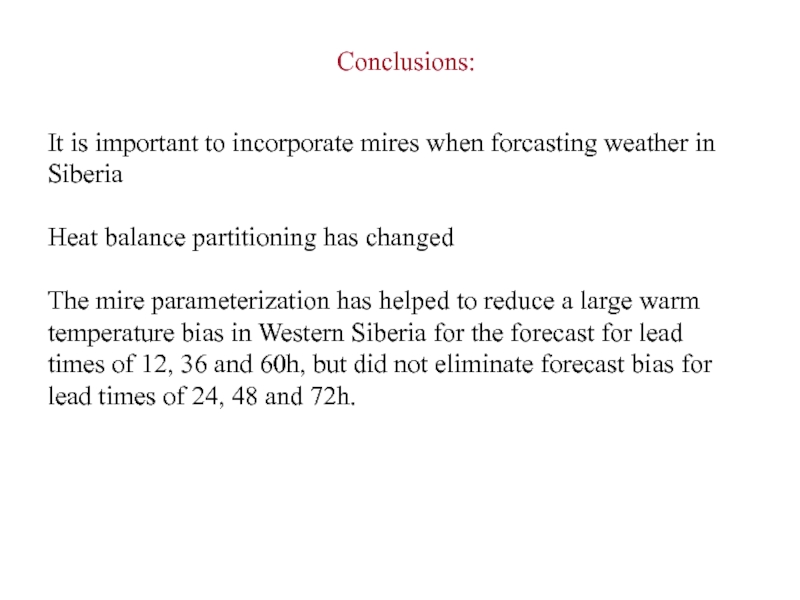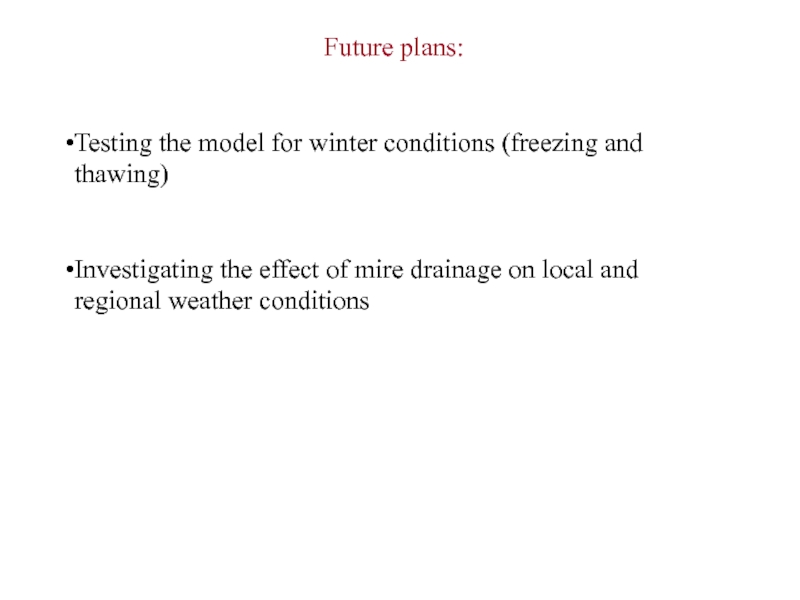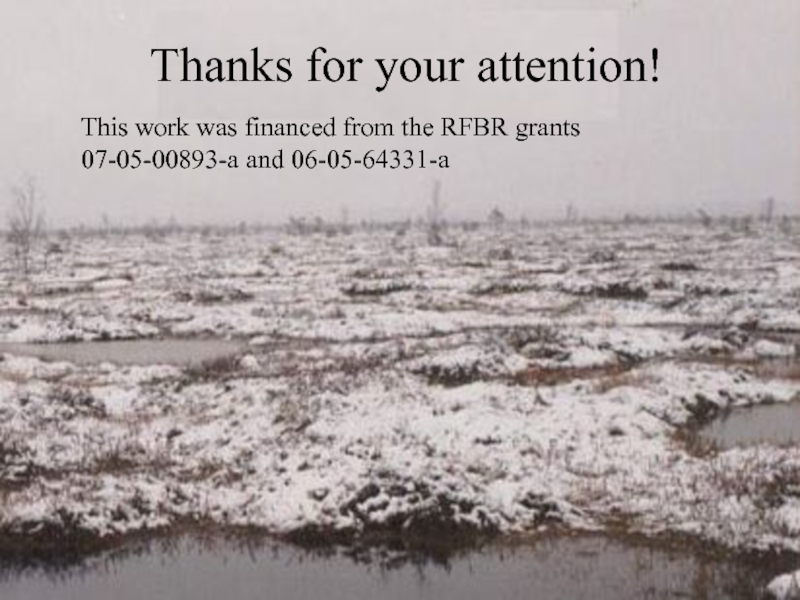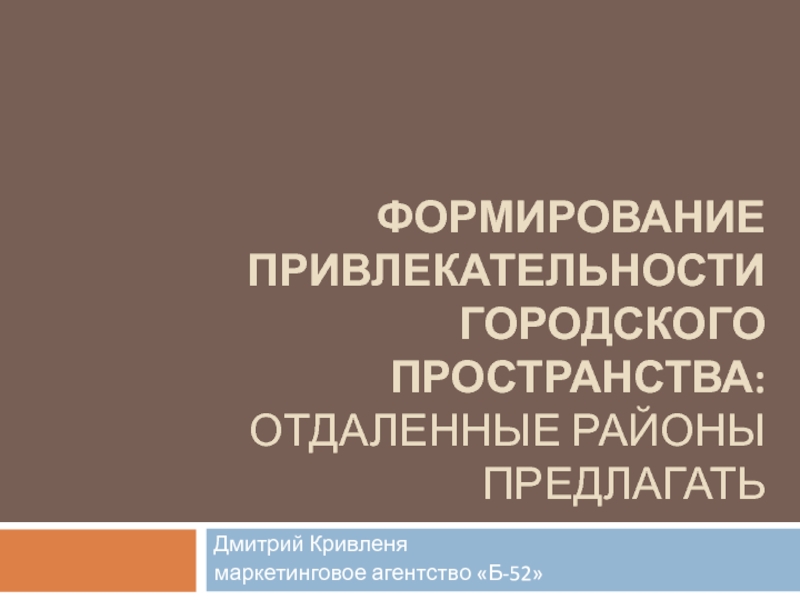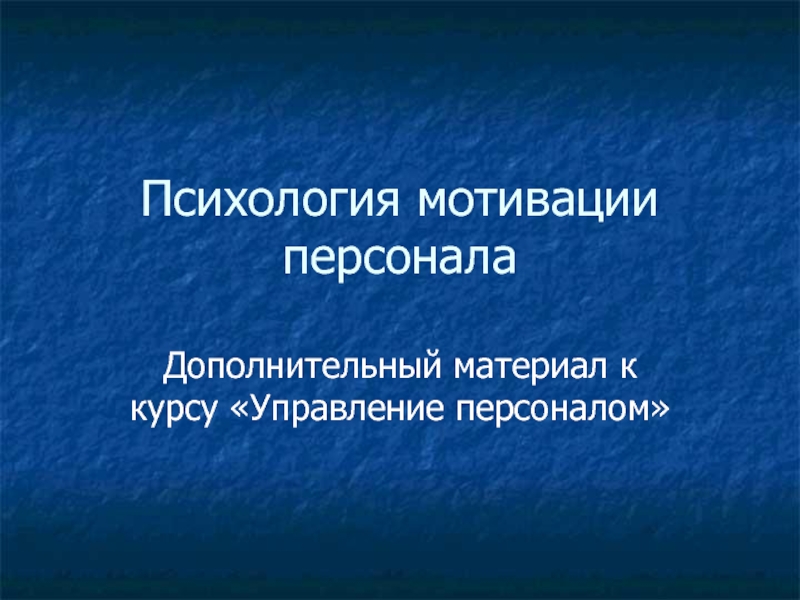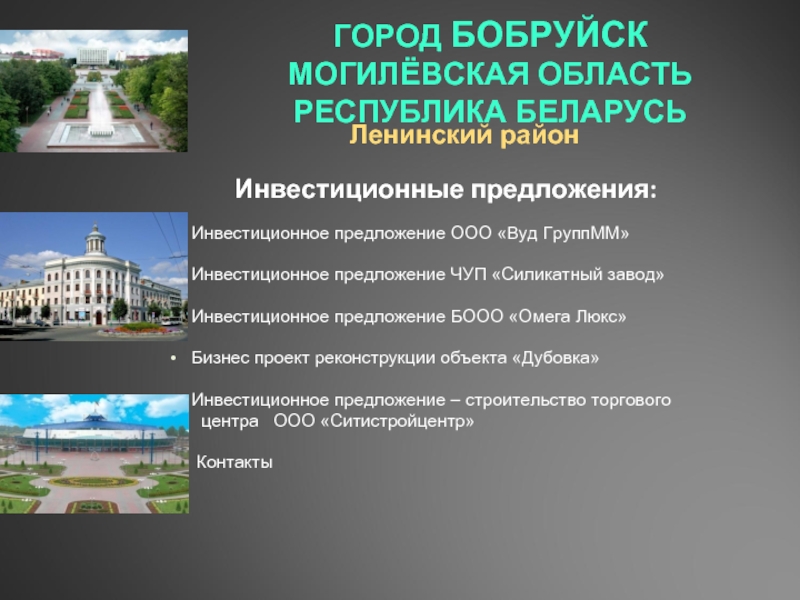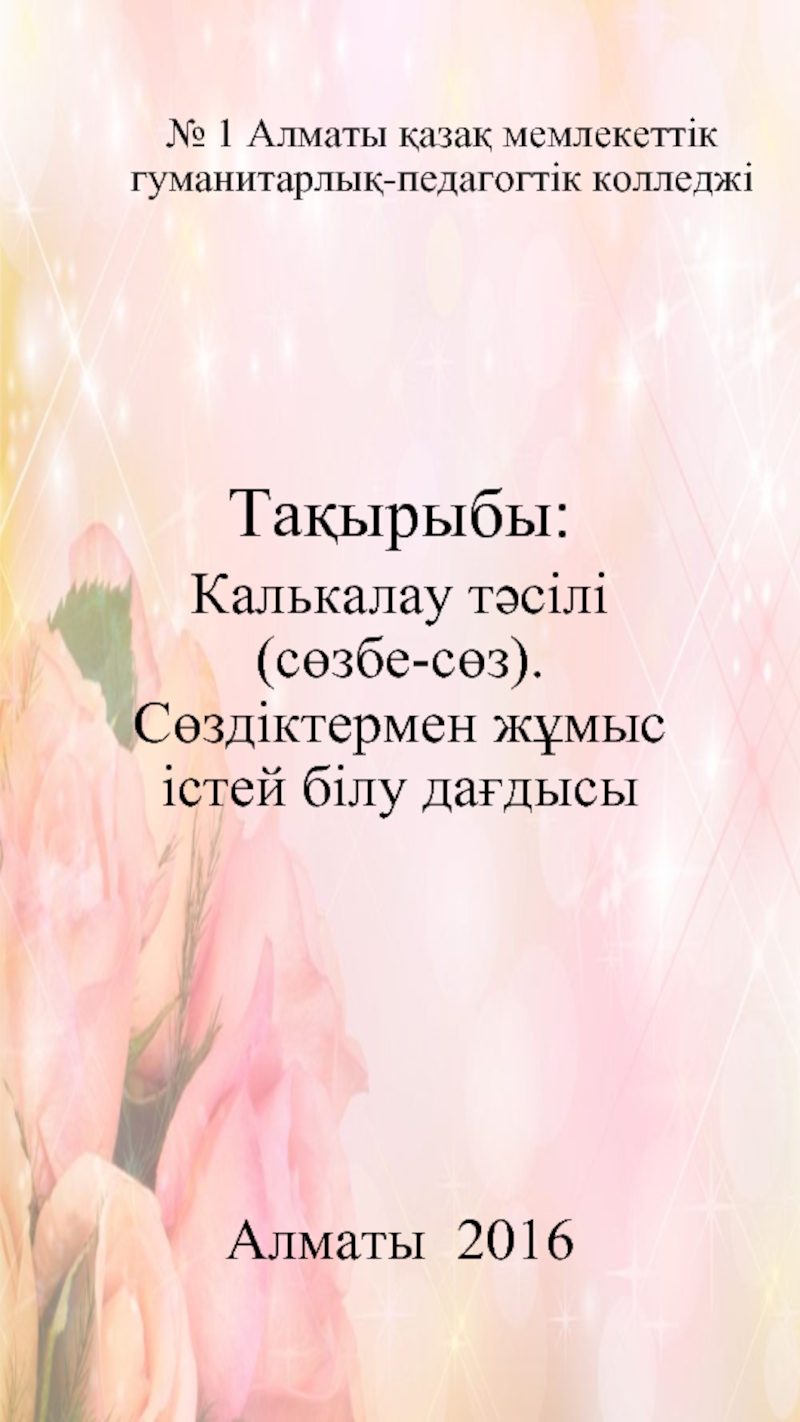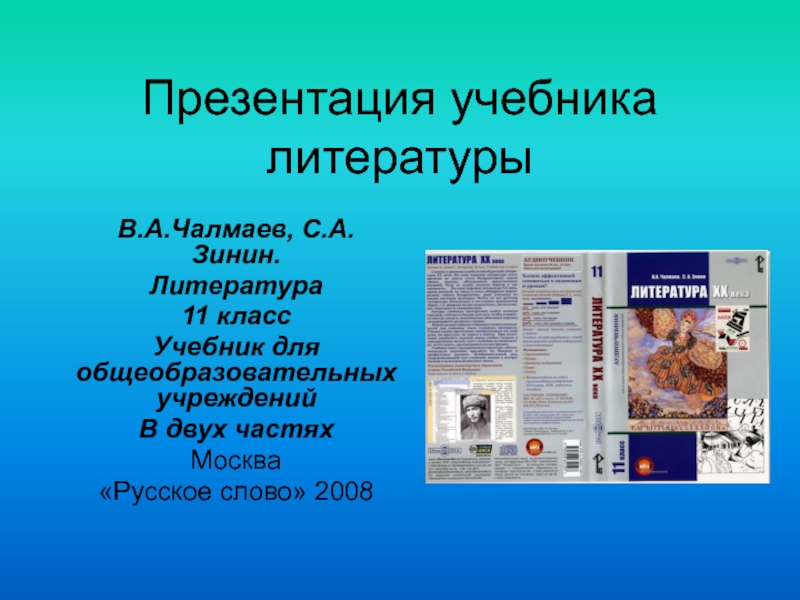- Главная
- Разное
- Дизайн
- Бизнес и предпринимательство
- Аналитика
- Образование
- Развлечения
- Красота и здоровье
- Финансы
- Государство
- Путешествия
- Спорт
- Недвижимость
- Армия
- Графика
- Культурология
- Еда и кулинария
- Лингвистика
- Английский язык
- Астрономия
- Алгебра
- Биология
- География
- Детские презентации
- Информатика
- История
- Литература
- Маркетинг
- Математика
- Медицина
- Менеджмент
- Музыка
- МХК
- Немецкий язык
- ОБЖ
- Обществознание
- Окружающий мир
- Педагогика
- Русский язык
- Технология
- Физика
- Философия
- Химия
- Шаблоны, картинки для презентаций
- Экология
- Экономика
- Юриспруденция
Parameterization of mires in a numerical weather prediction model Alla YurovaHydrometeorological Centre of Russia презентация
Содержание
- 1. Parameterization of mires in a numerical weather prediction model Alla YurovaHydrometeorological Centre of Russia
- 2. Mire (peatland): definition Drainage of water is
- 3. The spatial distribution of mires in Russia
- 4. Global semi-Lagrangian NWP model SL-AV (Tolstykh, 2001)
- 5. Modifications done to the SL-AV model to
- 6. The Mixed Mire Water and Heat
- 7. Sensible heat Latent heat Components of
- 8. Components of the radiation and heat balance
- 9. Mean bias error (MBE) for forecasted temperature
- 10. . Mean absolute error (MAE) for
- 11. Mean bias error (MBE) for forecasted
- 12. RMSE for forecasted relative humidity, for the
- 13. Conclusions: It is important to incorporate mires
- 14. Future plans: Testing the model
- 15. Thanks for your attention! This work was financed from the RFBR grants 07-05-00893-а and 06-05-64331-а
Слайд 1Parameterization of mires in a numerical weather prediction model Alla Yurova Hydrometeorological
Слайд 2Mire (peatland): definition
Drainage of water is blocked. Precipitation is retained. Water
Specific vegetation-Sphagnum moss, sedges
Decomposition of organic matter is slowed-peat is formed
Слайд 3The spatial distribution of mires in Russia from the GIS
"Peatlands
Mires have a specific:
Heat balance
Moisture exchange
Слайд 4Global semi-Lagrangian NWP model SL-AV (Tolstykh, 2001)
Operational NWP in Hydrometeorological
Resolution 0.72о lat и 0.9о lon, 50 vertical levels
Dynamical core- semi-Lagrangian, semi-implicit, vorticity and divergence as prognostic variables, unstaggered horizontal grid
Physical parameterizations- ALADIN/ALARO, including ISBA LSS
In Siberia forecasts in summer are biased towards high air temperature and low relative humidity
Слайд 5Modifications done to the SL-AV model to simulate mire heat and
water
Multilayer soil heat transfer model with heat capacity and thermal conductivity from Wania et al. (2009)
Water balance with MMWH
Two schemes to simulate evapotranspiration(1-Lafleur et al., 2005;2-Weiss et al., 2006)
Prescribed roughness length and albedo
1
2
ET-evapotranspiration
РЕТ-potential ET
Слайд 6
The Mixed Mire Water and Heat model MMWH (Granberg et al.,
ΔW=P-E-q,
q=lq·i·K_h(zcat-zwt),
W-water content, P-precipitation, E-evapotranspiration, q-runoff, i-slope of the water table,·K_h-transmissivity coefficient, lq-lumped parameter
zcat
zwt
Слайд 7Sensible heat
Latent heat
Components of the heat balance from the eddy-flux
Слайд 8Components of the radiation and heat balance from the standard model
July-August 2008, “mire” grid cells only, Western Siberia
LW balance
Sensible heat
Latent heat
Soil heat flux
Слайд 9Mean bias error (MBE) for forecasted temperature °C, for the standard
July-August 2008, “mire” stations only, Western Siberia
Слайд 10.
Mean absolute error (MAE) for forecasted temperature °C, for the standard
July-August 2008, “mire” stations only, Western Siberia
Слайд 11
Mean bias error (MBE) for forecasted relative humidity, for the standard
July-August 2008, “mire” stations only, Western Siberia
Слайд 12RMSE for forecasted relative humidity, for the standard model (reef), for
July-August 2008, “mire” stations only, Western Siberia
Слайд 13Conclusions:
It is important to incorporate mires when forcasting weather in Siberia
Heat
The mire parameterization has helped to reduce a large warm temperature bias in Western Siberia for the forecast for lead times of 12, 36 and 60h, but did not eliminate forecast bias for lead times of 24, 48 and 72h.
